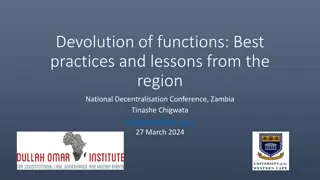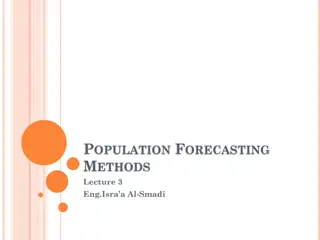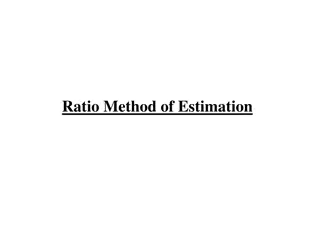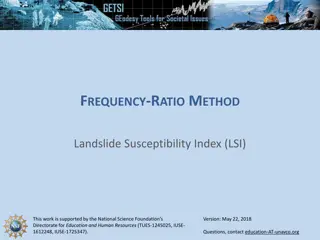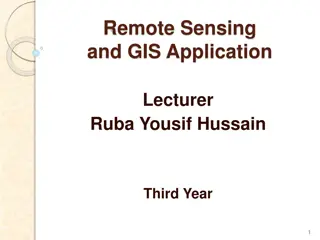Subnational Population Projections Using Ratio Method: Advantages and Variations
The ratio method, particularly the constant share and shift-share variations, is commonly used for projecting small area populations when data for the component method are lacking. It involves holding the smaller area's share of the parent population constant or allowing for changes over time. Care must be taken with the shift-share method to avoid implausible results.
Download Presentation

Please find below an Image/Link to download the presentation.
The content on the website is provided AS IS for your information and personal use only. It may not be sold, licensed, or shared on other websites without obtaining consent from the author.If you encounter any issues during the download, it is possible that the publisher has removed the file from their server.
You are allowed to download the files provided on this website for personal or commercial use, subject to the condition that they are used lawfully. All files are the property of their respective owners.
The content on the website is provided AS IS for your information and personal use only. It may not be sold, licensed, or shared on other websites without obtaining consent from the author.
E N D
Presentation Transcript
International Workshop on Subnational Population Projections using Census Data 17 18 January 2013 Beijing, China
Session III: Preparing subnational projections using a top-down approach The ratio-method and its variations Advantages and shortcomings
The ratio method: constant share Ratio method is applied mainly for projecting the population of small areas within a country for which all inputs required by the component method are not always readily available
The ratio method: constant share The constant share method holds the smaller area s share of the parent population constant at a certain point in time, usually at the base year. Data requirement are light: Population figures for the smaller areas are required for one point in time only, and for the parent area a population projection. Like all variations of the ratio method, the constant- share method is usually applied to total populations, sometimes disaggregated by sex
Ratio Method I Constant Share = = Total Population at time t (Parent Population) Sub Population in region i at time t P t i P t i = P P = i Ratio (child i to parent at time t=0) 0 t X 0 = 0 * t = i i P X P 0 t t
Ratio method Year 2010 2015 2020 2025 World population 6,896 7,283 7,656 8,003 (P1) (P2) (P0) (P3) Asian 4,164 - - - Population Ratio of Asia to World, 2010 0.6039 - - - (X0i) Projected Asian population 4,398 4,623 4,833 (P1 x X0i) (P2 x X0i) (P3 x X0i) 6
Ratio method Population in Asia (Millions) 6,500 6,000 5,500 5,000 4,500 4,000 2010 2030 2050 2070 2090 Asia UN 2010 Asia const. ratio
The ratio method: shift share The shift-share method allows for changes in population shares of the smaller areas over time. The trends of changing shares may be determined by inspecting past trends or by formulating appropriate assumptions. The shift-share method does not guarantee plausible results, so care must be taken and constraints introduced to avoid extremely large subpopulations or even negative population figures.
Ratio Method II Shift Share = = Total Population at time t (Parent Population) Sub Population at time t Year Base year Number of years in the projection period Number of years in the base period = P t i P t b z y t = = = i = i = i = P P P P P P z y = + i * 0 0 t t t b P P t t = = t b = 0 0 t t
The ratio method: share-of-growth Instead of population shares as in two preceding methods, the share-of-growth method is based upon population growth rates for the subpopulations. The method assumes that the observed population growth of the smaller areas will be constant over the projection period. The share-of-growth method experiences problems if there are growth rates with opposite signs for the subpopulations.
Ratio Method III Share-of-Growth = = Total Population at time t (Parent Population) Sub Population in region i at time t + P t i P t i = i = P P P P ( ) = i i = * 0 t t b P P P P = 0 0 t t t t = t b = 0 t
Advantages and shortcomings Minimum of data Ease of use Problematic for longer projection periods Complex for more detailed indicators (age, sex) No or little information on the demographic characteristics of the population



